Please Note: This post may contain affiliate links. If you click one of them, we may receive a commission at no extra cost to you. As an Amazon Associate, I earn from qualifying purchases.
Last Updated on November 1, 2025 by Kevin Collier
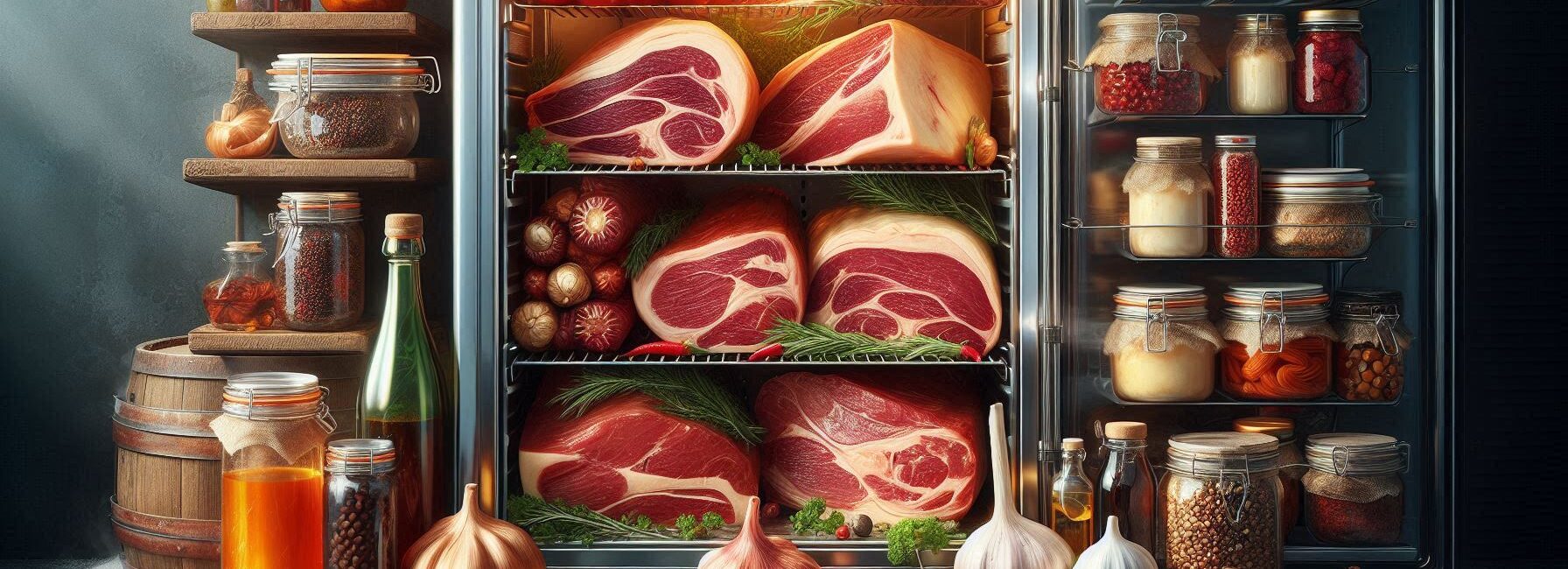
Top Takeaways and Key Concepts
- Freeze meat tightly wrapped to prevent freezer burn and label each package.
- Portion meat before storage for single-meal convenience and easier thawing.
- Pressure-can cooked meat in sterilized jars, leaving headspace for expansion.
- Dehydrate lean meat strips evenly spaced, marinated, and cooked to proper dryness.
- Store preserved meat properly: canned in cool dark areas, frozen below 0°F.
Alright, let’s talk about meat and how to keep it around for a while. I mean, who doesn’t love having an amazing stash ready to go? Imagine this: you’re at a barbecue, and everyone’s talking about what they brought. You casually pull out a perfectly preserved steak from last summer. Instant hero. Everyone’s impressed.
Storing meat is like giving yourself a big hug of preparation. If you’re heading out camping or gearing up for who knows what, having good meat supply means you won’t have to rush to the store. There's nothing worse than craving bacon only to find the shelf empty. Total buzzkill, right?
There are simple ways to preserve meat. Freezing is a big one. It’s like putting meat in a happy, chilly nap. Just wrap it up tight. No one likes freezer burn. And if you really want to get fancy, you can try canning or dehydrating. Canning is like giving meat a cozy little jar to stay safe in. Dehydrating? Well, that’s turning meat into a chewy snack. Think jerky! Who doesn’t love that on a camping trip?
Learning these tactics makes you feel like you're one step closer to being the best prepper. When you're hungry, it's all about having choices. You don't have to go to the grocery; you can make tasty dinners with what you already have. Also, think about the stories you can tell about how you dealt with the big meat problem.
Get ready to jump into this hefty adventure. You'll be the person everyone turns to for summer barbecues, winter stews, and anything else in between. And if things get crazy, you'll know you have a delectable backup plan in your freezer. That's a win!
Understanding Different Methods of Preservation
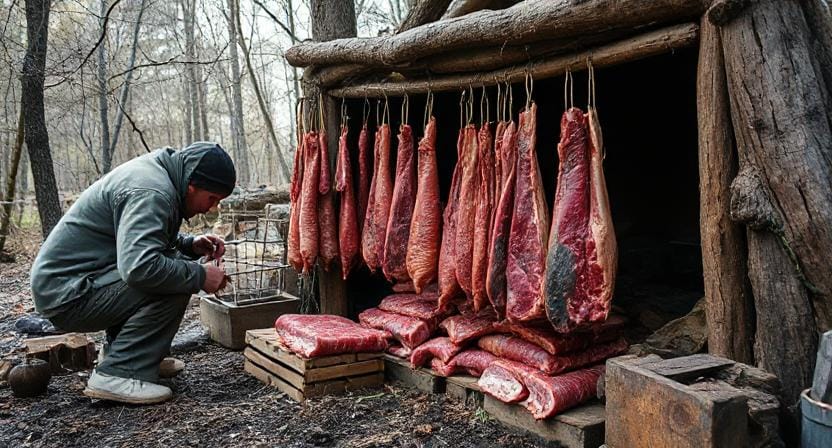
First off, there are several ways to preserve meat—think of them as your culinary superheroes. Each method has its strengths and weaknesses, much like my attempts at grilling chicken without setting off the smoke alarm.
1. Freezing: This is probably the most straightforward method. Just pop that package of meat into the freezer and forget about it until you’re ready to grill up some burgers. However, keep in mind that not all meats freeze equally well; fish might turn into something resembling frozen mush if left too long.
*** Shop for Survival Gear - Tools - Kits ***
Survival Gear - Bags and Backpacks - Knives - Boots/Footwear - Communication
Outdoor Cooking - Gloves - Hydration - Dry Boxes - Water Filtration Systems
Tents - Sleeping Bags - First Aid Kits - Multi-Tools - Flashlights - Fire Starters
Navigation - Survival Food - Night Vision - Headlamps - Stun Guns - Binoculars
2. Canning: Yes, canning isn’t just for grandma’s jam! You can actually can meat too. This involves cooking the meat thoroughly and sealing it in jars before processing them in a pressure canner (which sounds way more intimidating than it is). Just make sure you don’t confuse your beef with those leftover green beans!
3. Dehydrating: If you're looking to create tasty jerky or dried meats for hiking trips (or hiding from those pesky neighbors), dehydrating is the way to go. It removes moisture so bacteria can't throw their wild parties on your precious protein.
4. Salting and Smoking: These methods have been around since humans discovered fire—and probably even before that when cavemen were figuring out how to cook mammoth steaks without burning their eyebrows off! Salting draws moisture out while smoking adds flavor and preserves meat through low heat.
Preparing Meat for Storage
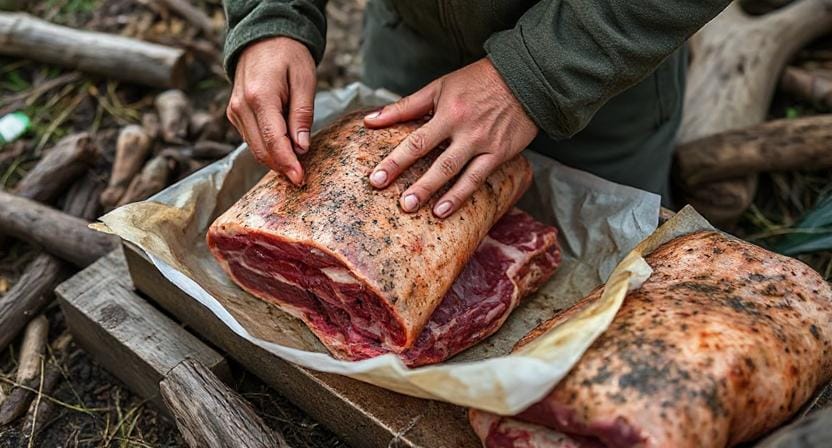
Now that we've established our preservation options, let's talk preparation because nobody wants old meat sitting around looking sadder than my attempts at gardening.
Before storing any kind of meat, start by ensuring it's fresh—like “just caught” fresh if you're fishing or “just butchered” fresh if you're raising livestock (or maybe just bought from a reputable source). Trim off any excess fat because fat goes rancid faster than I can finish a slice of pizza.
Next up? Portion control! Divide larger cuts into smaller pieces suitable for one meal each—unless you enjoy having an entire roast staring at you during dinner time like an uninvited guest who won’t leave.
Wrap your portions tightly using freezer paper or vacuum-sealed bags—this prevents freezer burn which is akin to finding frostbite on your steak after six months in cryogenic storage.
Freezing Meat Like a Boss
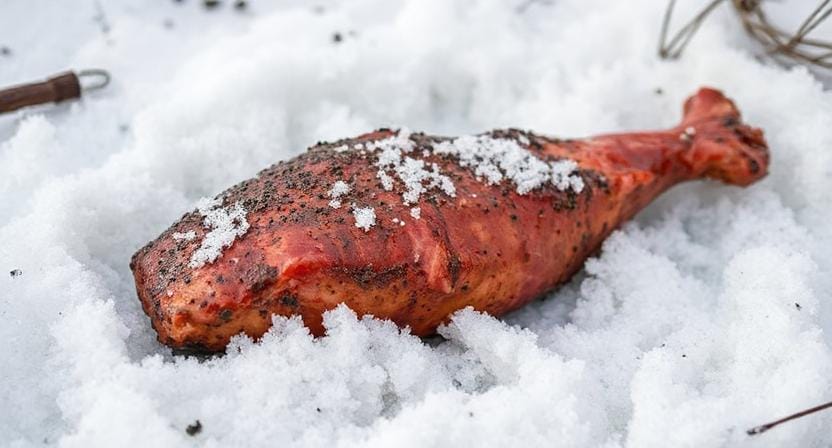
So, you've chosen freezing as your preservation method—it’s simple yet effective! But here's where things get tricky; not every piece of meat should be treated equally once it hits sub-zero temperatures.
When freezing raw meats such as beef or chicken breasts, remember this golden rule: label everything! Nothing feels worse than defrosting what looks suspiciously like last year's mystery stew only to find out it's actually pork chops from two seasons ago.
Also, arrange items neatly in your freezer so they don’t become a jumbled mess reminiscent of my sock drawer—a total disaster zone! Use bins or baskets if necessary; trust me on this one—you’ll thank yourself later when searching for that perfect steak doesn’t involve an archaeological dig through frostbitten packages.
Canning Meat Without Losing Your Mind

Canning may sound complicated but stick with me here; we can do this together! Start by sterilizing glass jars and lids—no one wants bacteria crashing their canned food party!
Cook the meat first until it's tender (the smell alone will convince everyone nearby that dinner is coming soon). Then pack those cooked morsels into jars leaving enough headspace at the top (about an inch) because guess what? Things expand during processing!
Process them according to guidelines specific for each type of meat using a pressure cooker—this part may feel daunting but think about all those homemade soups you'll be able to whip up later without needing takeout menus!
And don't forget: patience is important as you wait for the jars to seal right. If if life had such straightforward instructions!
How to Make Jerky Like a Pro When You're Dehydrated
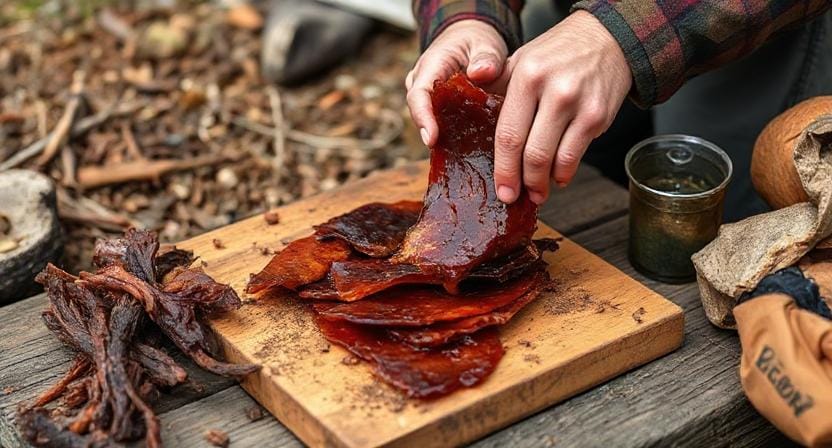
Yes, the skill of creating jerky! Dehydrated meats are calling your name if you've ever wanted something chewy and fulfilling when hiking in nature or watching survival shows all day.
First, cut lean cuts against the grain into thin strips. Don't make them too thick, or you'll end up with shoe leather instead of delicacy. Put a lot of spices on these strips and let them sit overnight. Imagine garlic powder, soy sauce, and “I really want this snack right now!”
Once they have been marinated enough (and hopefully not eaten all of them), place them flat on dehydrator trays so that air can flow freely between the pieces. A crowded tray will only lead to disappointment city!
Set temperature settings according to guidelines based on types used—I usually aim somewhere between 145°F-160°F depending upon personal preference—and allow several hours until they reach desired dryness levels while keeping occasional peeks open so no sneaky critters invade my territory!
Storing Your Preserved Meats Properly
After putting all this effort into preserving your hard-earned meats—it would be tragic if they went bad due improper storage techniques afterward! To ensure longevity:
Store canned goods in cool dark places away from sunlight which could ruin flavors faster than my kids ruin family game night by flipping over Monopoly boards mid-game.
For frozen options? Keep temperatures consistent below 0°F ideally while avoiding frequent opening/closing doors leading directly towards thawing disasters unfolding right before our eyes!
If opting toward dried products like jerky? Ensure airtight containers exist containing desiccant packs inside preventing moisture absorption along with potential spoilage occurring unexpectedly amidst snacking sessions occurring late-night TV binges…
With proper knowledge comes great responsibility regarding handling food safely throughout various methods discussed above—we're talking about creating culinary masterpieces worthy enough making Gordon Ramsay proud someday…(minus his inevitable swearing)!
Frequently Asked Questions
What is the most common way to preserve meat long-term?
Freezing is the most common and easiest method, as long as the meat is wrapped tightly and stored below 0°F.
Why should meat be portioned before storing?
Pre-portioning prevents repeated thawing and makes it easier to use only what is needed for a single meal.
How does pressure-canning preserve meat?
Pressure-canning heats cooked meat in sealed jars to safe temperatures, preventing bacteria and allowing shelf-stable storage.
What type of meat is best for dehydrating?
Lean cuts work best because reduced fat slows spoilage and improves the texture of jerky-style dried meat.
How dry should dehydrated meat be?
Meat should be fully dry but still slightly pliable, ensuring moisture is low enough to prevent microbial growth.
Where should canned meat be stored?
A cool, dry, dark storage area protects flavor and extends the shelf life of home-canned meat.
How can freezer burn be prevented?
Use airtight wrapping, vacuum sealing if possible, and avoid trapped air around each portion.
Suggested Resources:
Canned Meat Recipes
https://www.foodpreserving.com/canned-meat-recipes
Meat Preservation Techniques
https://www.meatpreservation.com
The Ultimate Guide to Home Canning
https://www.homecanningguide.com

Kevin Collier is a seasoned survivalist and expert in prepping and homesteading, contributing to WiseSurvive.com. With a deep-rooted passion for self-sufficiency and outdoor survival skills, Kevin shares practical advice, strategies, and resources to help individuals prepare for any challenge. His informative articles cover a range of topics, from essential survival techniques to sustainable living practices, empowering readers to thrive in any situation. Whether you're a novice or a seasoned prepper, Kevin's insights will inspire you to take charge of your readiness and build resilience for the future.




